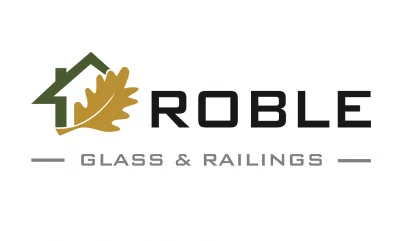
The Evolution of Glass Railings: From Functional to Fashionable
Dear Roble Glass & Railings readers,
Embark with us on a fascinating journey through the Evolution of glass railings, from their humble beginnings as functional safety barriers to their current status as chic, defining elements of modern architecture and design. Once valued solely for their utility in commercial and public spaces, Crystal railings have undergone a remarkable transformation, mirroring the Evolution of architectural trends and innovative advancements in glass technology.
This transformation has broadened the applications of crystal fences and elevated their role within exterior and interior design landscapes. Today, they are a testament to how materials can evolve beyond their original purposes to become central features of aesthetic expression and design ingenuity. From the sleek edges of a contemporary home’s staircase to the unobstructed views offered by balcony barriers, transparent railings now embody a perfect blend of functionality, safety, and style.
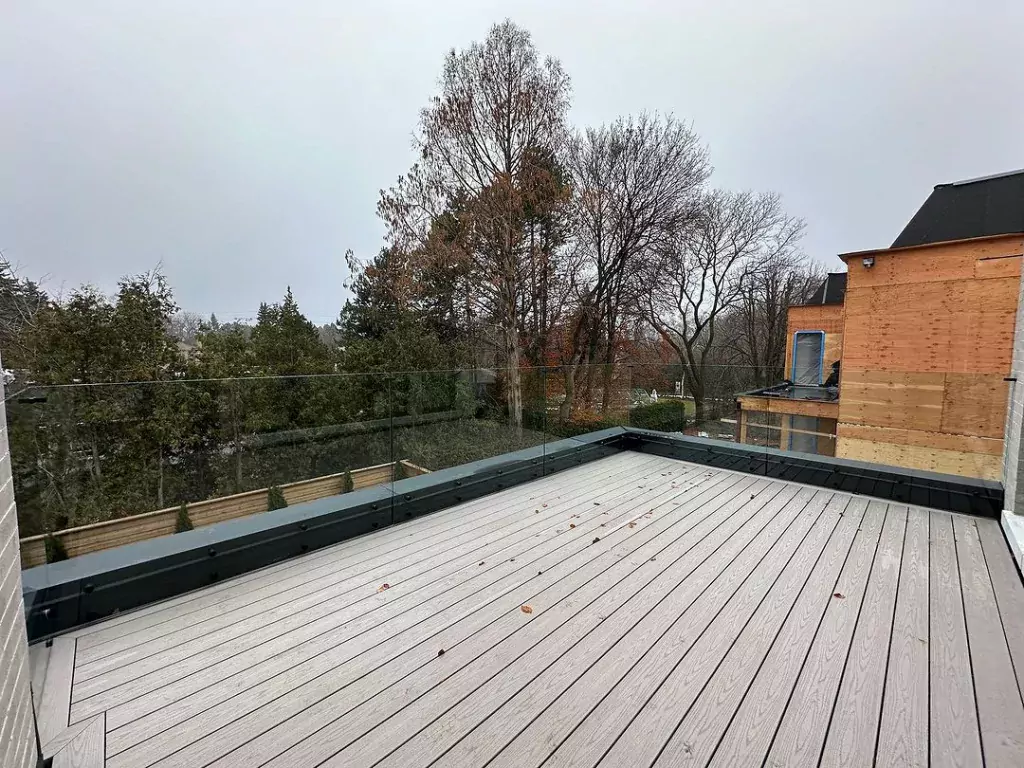
New Year, New Look: Transforming Spaces with Glass Railings
So, let’s raise the curtain on this design evolution, exploring how crystal guardrails have become emblematic of modern elegance and why they continue to capture the imagination of architects, designers, and homeowners alike.
Early Uses of Glass in Architecture
The story of transparent railings begins with the story of the glass itself—a material that has fascinated and served humanity for thousands of years. Initially discovered as natural obsidian used by Stone Age societies, glass has journeyed through time, evolving alongside human civilization. Its early architectural use was predominantly in the form of windows in the grand buildings of ancient Rome and the colorful, intricate mosaics of Islamic architecture. These applications, however, barely scratched the surface of glass’s potential in construction and design.
The true potential of glass began to unfold with the Industrial Revolution, which brought about significant advancements in glass production. The invention of plate glass in the 19th century, for example, allowed for more extensive and more durable glass panes, paving the way for its use beyond mere windowpanes and into more structural roles within buildings. Yet, during these early times, glass was still not considered a primary material for fences due to limitations in strength and safety concerns.
The Functionality Era
It was in the 20th century that glass began to be seen as a viable material for fences, thanks to further innovations in tempered and laminated glass. These technologies enhanced the strength and safety of glass, making it suitable for use as a barrier without compromising its intrinsic beauty. Initially, see-through guardrails found their place in commercial and high-end retail environments, valued for their ability to provide safety and visibility. Shopping malls, office buildings, and observation decks embraced glass for its clear, unobstructed views, leveraging its transparency to create a sense of openness and space.
Crystal fences during this era were primarily functional. They served to protect and divide spaces without blocking light or views. However, the aesthetic potential of glass was beginning to be noticed by architects and designers, who admired its sleek, modern appearance and how it could seamlessly integrate with any design style.
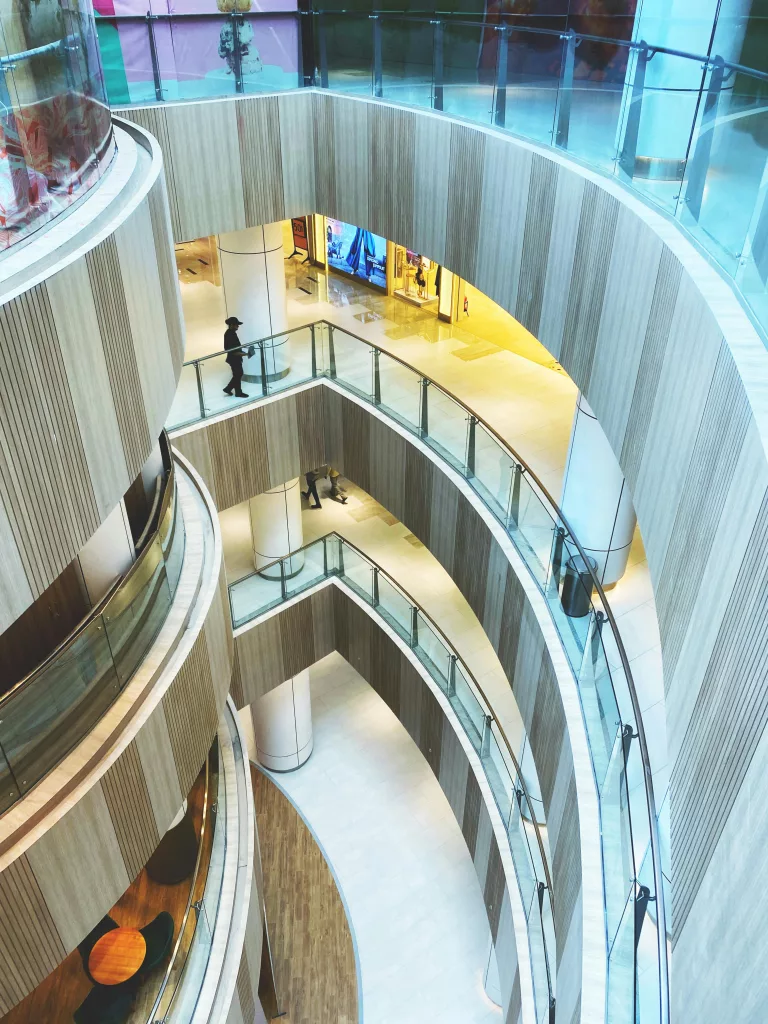
Technological Advances in Glass Production
The real game-changer for transparent railings was the advancement in glass manufacturing techniques. The development of tempered glass, treated through controlled thermal or chemical processes to increase its strength, and laminated glass, which sandwiches a tough plastic interlayer between two panes of glass, revolutionized the use of glass as a safety material. These technologies addressed the primary concerns regarding glass’s fragility and potential danger if broken, making glass balustrades a more attractive option for a broader range of applications.
These advances also allowed for creative freedom with glass. Architects and designers could now experiment with different thicknesses, colors, and finishes, confident in the material’s safety and durability. The stage was set for crystal guardrails to move beyond their functional origins and into aesthetic and design-focused applications.
As we moved into the 21st century, the use of see-through barriers expanded rapidly, influenced by the minimalist design movement and the growing preference for natural light and open floor plans. Clear handrails are synonymous with luxury, elegance, and modernity, gracing the interiors and exteriors of homes, commercial buildings, and public spaces worldwide.
Glass Railings Enter Residential Design
The infiltration of clear handrails into residential spaces is significant in their Evolution. This transition was propelled by the desire for modern aesthetics and the pursuit of designs emphasizing openness, light, and a seamless connection between indoor and outdoor environments. Homeowners and architects alike began to see the potential of glass railings to fulfill these desires without compromising safety or durability.
Embracing Modernity and Openness
The appeal of crystal guards in homes is multifaceted. They offer a sleek, contemporary look that metal or wooden railings can’t match, providing an unobstructed view that is particularly valuable in scenic locales. Whether overlooking a cityscape from a high-rise balcony or enjoying a panoramic ocean view, glass railings ensure that nothing stands between the viewer and the vista.
Moreover, the introduction of glass railings into residential designs was timely, coinciding with the rising popularity of open floor plans. These designs favored minimalistic styles and sought to maximize natural light, making glass railings a perfect match. Their transparency allows for an uninterrupted flow of light, contributing to brighter, more airy spaces that feel more extensive and inviting.
Customization and Personalization
Another factor contributing to the popularity of transparent barriers in residential settings is their versatility. Glass technology advancements made these railings safer and more durable and opened up a world of customization options. Homeowners could now choose from various finishes, tints, and textures to match their homes’ style and architectural character. This level of personalization was less readily available with traditional railing materials.
The Challenge of Integration
Despite their aesthetic appeal and functional benefits, integrating glass railings into residential designs took work. Architects and designers had to navigate building codes and safety standards, which vary significantly across jurisdictions. Moreover, a learning curve was associated with installing glass railings, given their weight and the precision required to ensure a flawless finish. However, the industry quickly adapted, developing specialized mounting systems and hardware that made installation more accessible and secure.
The Role of Glass Railings in Interior Design
Inside the home, see-through balustrades began to play a critical role in defining spaces without dividing them. Staircases, often a focal point in open-concept homes, were transformed into floating works of art by glass railings. Balconies and lofts benefited similarly, with transparent barriers maintaining an open feel while providing safety.
This era of residential design showcased glass railings not just as a boundary or barrier but as an integral part of the home’s aesthetic and architectural expression. They became a symbol of luxury and modern living, appreciated not only for their functionality but also for their ability to enhance the beauty of a space.
The Aesthetic Revolution
The aesthetic revolution in straightforward guardrail design marks a pivotal moment when functionality merged seamlessly with beauty, elevating these structures to the forefront of architectural innovation. This transformation was not just about the material itself, but how it was perceived and utilized within residential and commercial designs. Glass railings became more than mere safety features; they evolved into essential elements that define and enhance the aesthetic appeal of spaces.
Architectural and Design Innovation
As architects and designers became more adventurous, glass railings featured prominently in projects that sought to make a statement. The ability of glass to blend with any architectural style—from classic to contemporary—made it a favorite among professionals looking to push the boundaries of design. Crystal balustrades offered a way to achieve an uncluttered, sophisticated look that facilitated the flow of natural light, creating spaces that felt open and connected to the natural world.
The revolution was also driven by innovations in glass technology, which allowed for the production of more robust, more durable glass. This technological leap meant that glass could now be used in more demanding structural applications, opening up new design possibilities. Curved glass railings, intricate patterns, and even colored glass became feasible, providing designers with a broader palette.
Integration with Natural Environments
The aesthetic revolution in glass railing design also embraced the concept of indoor-outdoor living. In residential spaces, crystal fences allow a seamless transition between interiors and exteriors, blurring the lines between the built environment and the natural landscape. This integration is particularly valuable in homes with scenic surroundings, where the aim is to bring the outdoors in and create a sense of harmony with nature.
In commercial designs, clear guardrails contribute to creating welcoming, inclusive spaces. Airports, shopping malls, and office buildings use clear guardrails to foster an environment that feels open and accessible, enhancing the user’s experience by promoting visibility and interaction.
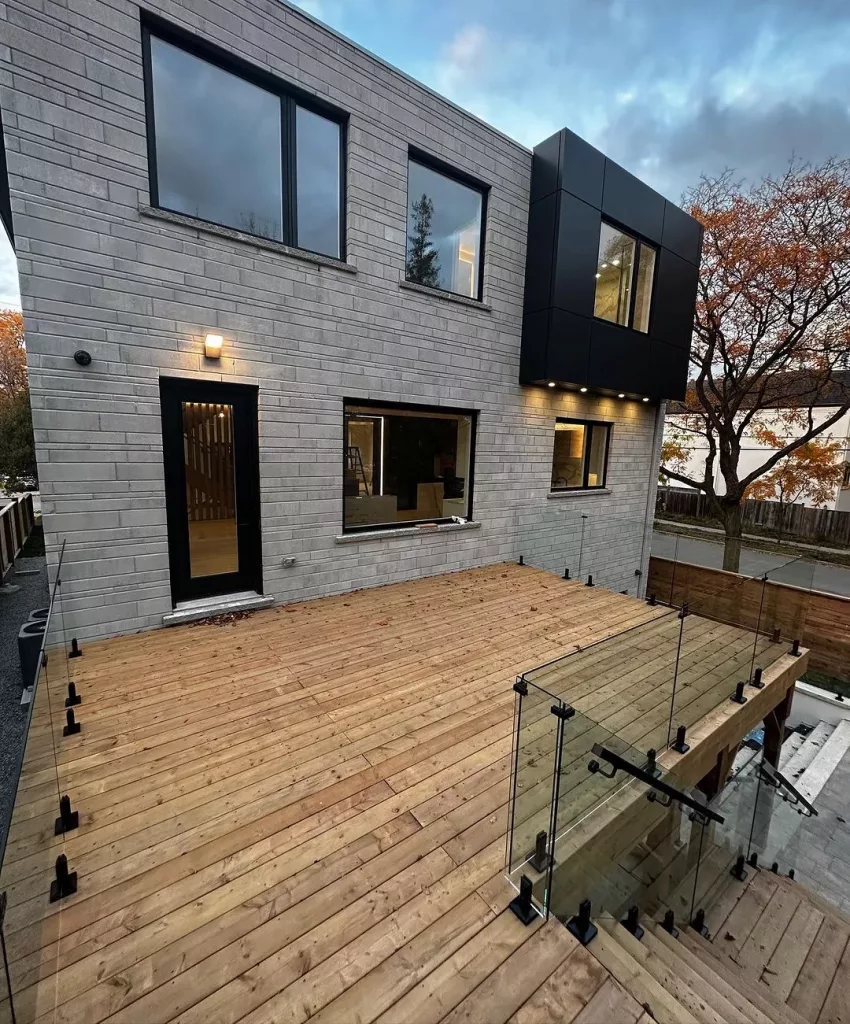
Revolutionize Your Home with Elegant Glass Enclosures
The Future of Aesthetic Design
As we look to the future, it’s clear that the aesthetic revolution in glass railing design is far from over. Emerging trends point towards even more technology integration, with intelligent glass options offering the ability to change opacity for privacy or to reduce glare, all while maintaining the sleek, clean lines that glass railings are known for.
Moreover, the ongoing exploration of glass’s aesthetic potential will likely yield new textures, colors, and forms, challenging architects and designers to continue innovating. The future of transparent balustrade design promises to further blur the boundaries between form and function, proving that beauty and safety coexist harmoniously.
The Rise of Customization
Customization in glass railing systems has revolutionized how architects and designers approach projects. No longer confined to standard designs, professionals and homeowners alike can now tailor transparent railings to fit unique spaces, styles, and visions. This level of customization includes:
- Variety in Glass Types: The availability of tinted, frosted, textured, and etched glass options provides many design possibilities, enabling glass railings to become integral components of a space’s design language.
- Shape and Configuration: Advances in glass manufacturing have made it possible to create glass panels in virtually any shape, offering solutions for curved balconies, spiral staircases, and other non-standard architectural features.
- Hardware and Mounting Options: From frameless systems that offer a sleek, uninterrupted look to post systems that feature metal or wooden posts for a more traditional appearance, the choice of hardware and mounting options allows for further personalization.
Shower Enclosure Trends: What’s Hot in 2023
Impact on Sustainability and Energy Efficiency
The push for customization and innovation in glass railings also aligns with growing concerns about sustainability and energy efficiency. Using recycled materials and intelligent glass technologies that improve thermal performance demonstrates the industry’s commitment to reducing environmental impact. Moreover, glass railings contribute to passive solar heating and natural light optimization, reducing the need for artificial lighting and heating in buildings.
Looking to the Future
The journey of transparent balustrades from mere safety barriers to elements of beauty and innovation reflects a broader shift towards transparency, customization, and sustainability in the built environment. As we embrace these advancements, glass railings stand as a symbol of how traditional materials can be reimagined to meet the needs of modern design, proving that the future of architecture and interior design is as clear and bright as the glass itself.
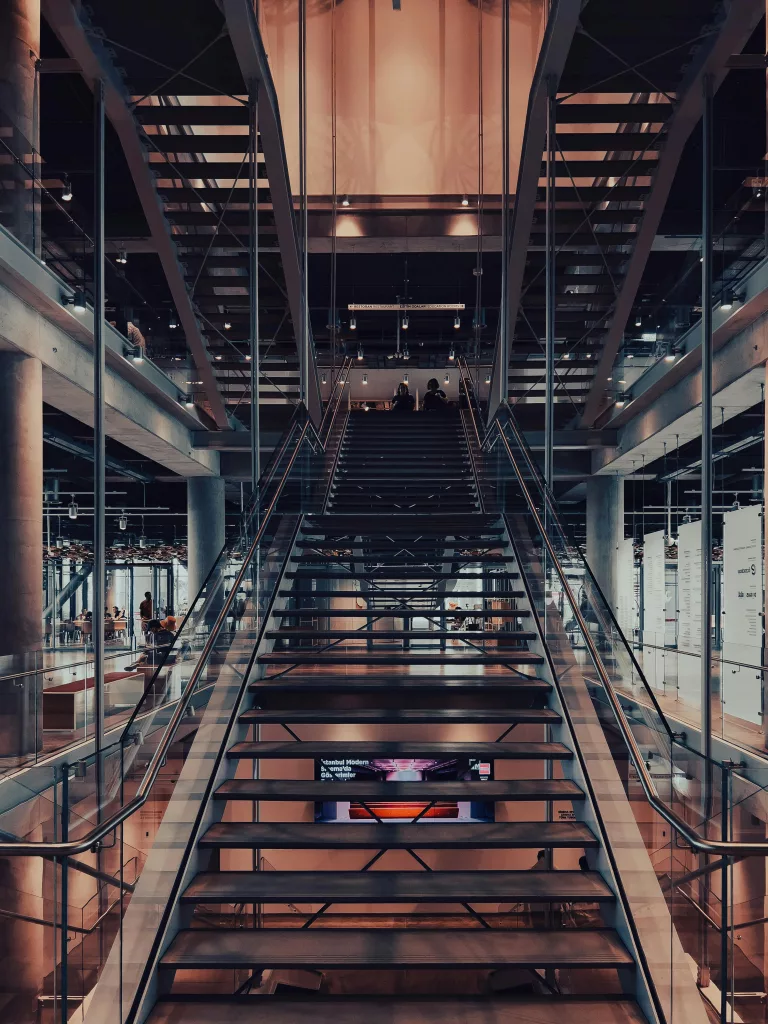
The Evolution of Shower Enclosures: From Curtains to Glass
A Call to Embrace Glass Railings
To our readers, whether you’re embarking on a new construction project, planning a renovation, or simply dreaming of your future home, consider the role that glass railings can play in realizing your vision. Their blend of functionality, beauty, and innovation makes them a worthy addition to any space, promising to enhance your environment in ways you may not have imagined.
As glass railings continue to evolve, they reaffirm their place as indispensable elements of modern design. They are more than just barriers; they are windows to the world, connectors of spaces, and harbingers of light. In embracing glass railings, we embrace a future where design knows no bounds, and the beauty of our surroundings is amplified in ways only glass can achieve.
